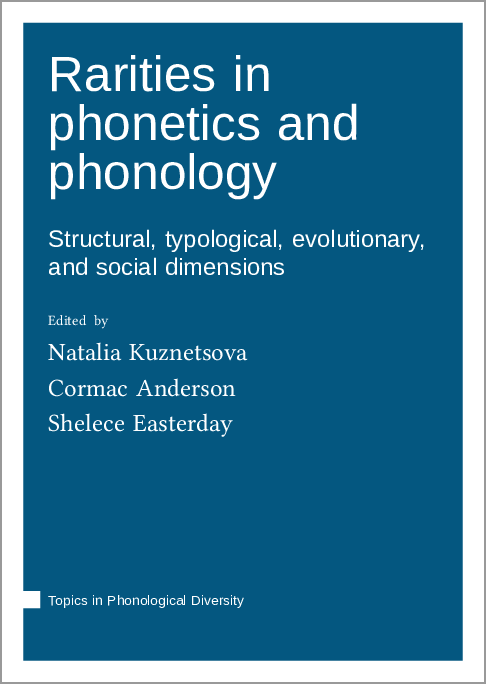We log anonymous usage statistics. Please read the privacy information for details.
Rarities in phonetics and phonology: Structural, typological, evolutionary, and social dimensions
Synopsis
Rare phenomena play a key role in forming and challenging linguistic theory. This volume presents multi-faceted analyses of rarities in phonetics and phonology, from a wide variety of theoretical standpoints. Some contributions to the volume analyse language-specific rare features, placing them in a broader cross-linguistic context and looking at a sum of their phonological, phonetic, and evolutionary properties, at times also making connections to sociolinguistic factors. Others consider the same (or similar) phenomena from different analytical angles, with extensive cross-referencing, or take a broad analytical or typological stance towards rare phenomena and discuss what it means to be rare.
The volume provides a nuanced picture of phonetic and phonological rarities in genealogically diverse languages, mostly lesser-studied, from around the globe. Authors were encouraged to attempt to strike a middle ground between radical exoticisation of the rarities at hand (describing them in idiosyncratic terms) and radical normalisation (underplaying the rarity of the phenomena at hand). Highly theory-specific or technical terminology is avoided or explained carefully, in order to make the book maximally accessible for a wide typologically-minded audience.
Chapters
-
Part I: Introduction
-
Rarities in phonetics and phonology
-
Why the search for rarities must take phonology seriously
-
Part II: Rare sound changes
-
*b > -k-A Berawan sound change for the ages
-
Linguistically motivated sound changeRevisiting some of the world’s rarest wonders
-
Consonant epenthesis in MetoTypologically rare but diachronically explicable
-
Reconciling the debate about final obstruent voicingThe phonology of Lakota obstruent lenition
-
Part III: Rare prosodic phenomena
-
Typology and evolution of minimal vowel systems in Central Chadic
-
A model of non-modal phonationBallisticity in Otomanguean languages
-
A tonological rarityTone-driven epenthesis in Ghomala’
-
Part IV: Rare vowels
-
The contradictory nature of fricative vowels in Chinese and beyond
-
Uvularization in Queyu phonology
-
Part V: Rare consonants
-
Silent sonorant articulations in Mehri and Shehret
-
Aerodynamic and acoustic correlates of word-initial voiceless nasal geminates of Ikema Miyako Ryukyuan
-
Preservation and loss of a rare contrast: Palatalization of rhotics in Slavic
-
Ejective fricatives in Upper Necaxa TotonacComplex segments or consonant clusters?
-
Part VI: Preaspiration
-
On the rarity of pre-aspirated consonants
-
Weighing preaspiration
-
Pre-aspiration in Ecuadorian Siona




